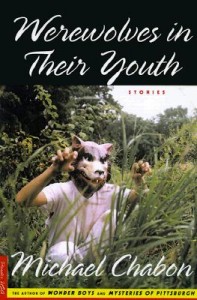 Michael Chabon lived many an aspiring fiction writer’s dream, shooting to prominence when one of his professors at UC Irvine, recognizing his gifts, sent his master’s thesis to a local agent, who secured Chabon a sizeable advance for what would become his first novel and an eventual bestseller, the excellent The Mysteries Of Pittsburgh. A decade would pass before he would truly fulfill his early promise, however, with the publication of the Pulitzer-winning The Amazing Adventures Of Kavalier And Clay, a sweeping, genre-blending investigation into the early days of the comic book industry in New York. Over the course of his career, he has dabbled in screenwriting, essay writing, comic books and genre fiction (the literary merits of which he is an ardent defender). His film work includes the blockbuster Spiderman 2, and the blockbuster failure John Carter, but it is as a fiction writer, first and foremost, that he wishes to be evaluated. Between the promise of Mysteries and the universal acclaim generated by Amazing Adventures, he published Werewolves In Their Youth, a collection of stories that charm despite their often tragic subject matter.
Michael Chabon lived many an aspiring fiction writer’s dream, shooting to prominence when one of his professors at UC Irvine, recognizing his gifts, sent his master’s thesis to a local agent, who secured Chabon a sizeable advance for what would become his first novel and an eventual bestseller, the excellent The Mysteries Of Pittsburgh. A decade would pass before he would truly fulfill his early promise, however, with the publication of the Pulitzer-winning The Amazing Adventures Of Kavalier And Clay, a sweeping, genre-blending investigation into the early days of the comic book industry in New York. Over the course of his career, he has dabbled in screenwriting, essay writing, comic books and genre fiction (the literary merits of which he is an ardent defender). His film work includes the blockbuster Spiderman 2, and the blockbuster failure John Carter, but it is as a fiction writer, first and foremost, that he wishes to be evaluated. Between the promise of Mysteries and the universal acclaim generated by Amazing Adventures, he published Werewolves In Their Youth, a collection of stories that charm despite their often tragic subject matter.
These stories deal with youth through the lens of old and young characters, many of whom are experiencing regret or a profound sense that life has taken a wrong turn. There are no happy marriages within these pages, and so no happy children, but Chabon is never cynical or gloomy. He is often compared to Fitzgerald, both as a prose stylist and in his choice of characters, and on both counts I believe him to deserve that flattery: his writing is beautiful, evocative, mellifluous, his metaphors moored, at all times, to the demands of the story rather than the call of his ego. There is profound psychological acuity on display here as well, though at this early stage of his career, his artifice is often all too visible; characters will, at times, speak in words too thematically weighty, too convenient to the author’s designs, to feel natural, and no one, no matter how fallen, is beyond a last-minute redemption. There are stories in which this works splendidly, as in “Green’s Book,” when a father realizes that a youthful perversion and the guilt it generates in him has been causing him to distance himself from his daughter and unintentionally withhold his love. But others fall somewhat short of this ideal.
My favorite pieces were the titular “Werewolves In Their Youth” and the final story, written as a gothic horror in the vein of Poe, “In The Black Mill.” The former is the collection’s most polished, and far more comfortable postponing judgment and residing in ambiguity. The latter, being so manifestly different from the other stories in tone and theme, was supremely enjoyable, a well-crafted horror story about a small town and their secret, longstanding practice of cannibalism. In every story, on every page, Chabon’s polished prose and the obvious compassion he has for his flawed creations smoothes over every bump in the storytelling, leaving his readers delighted to have been in his company and seen the world through his eyes.